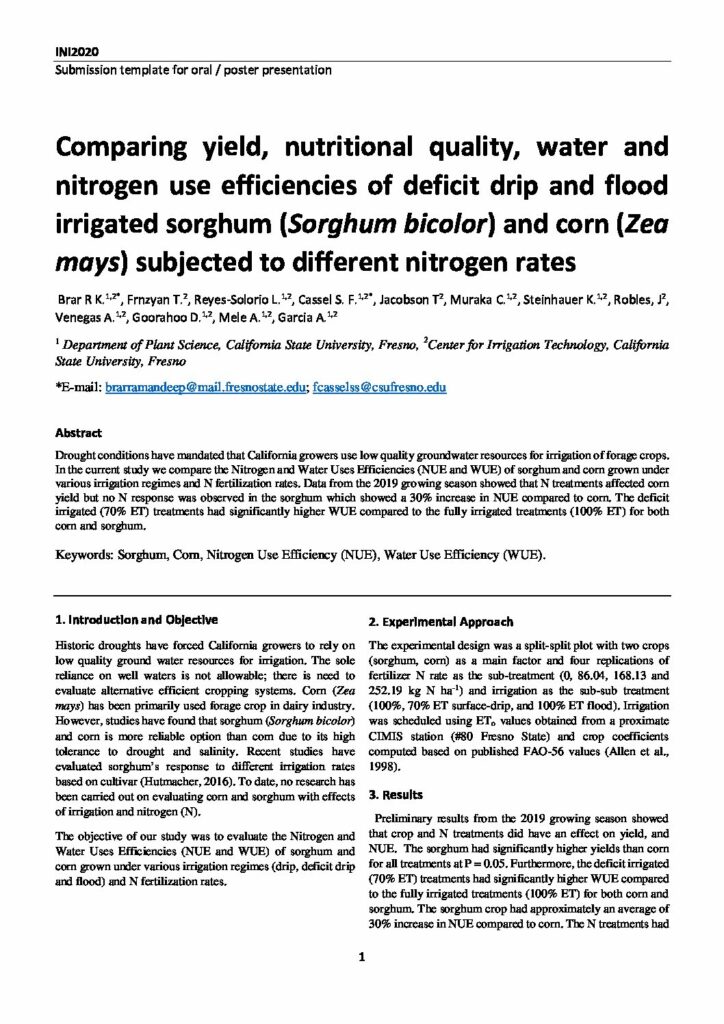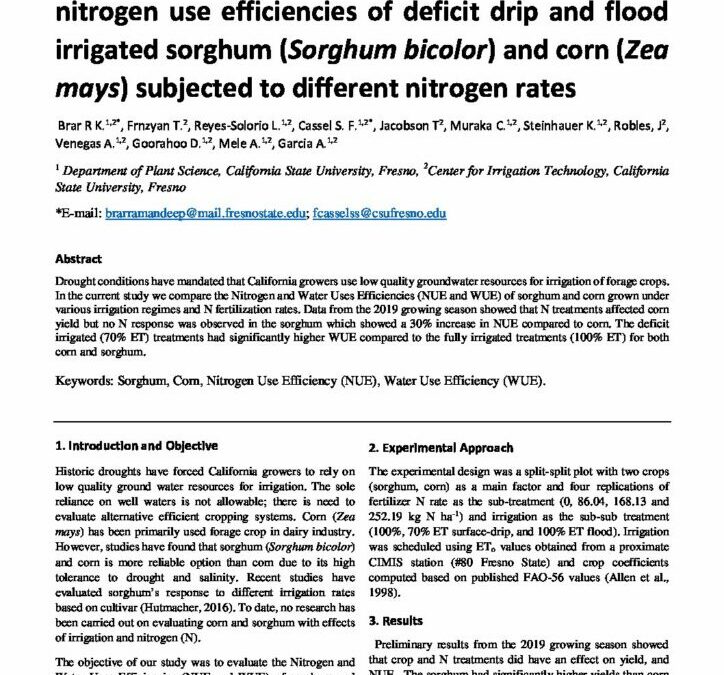Comparing yield, nutritional quality, water and nitrogen use efficiencies of deficit drip and flood irrigated sorghum

Drought conditions have mandated that California growers use low quality groundwater resources for irrigation of forage crops. In the current study we compare the Nitrogen and Water Uses Efficiencies (NUE and WUE) of sorghum and corn grown under various irrigation regimes and N fertilization rates. Data from the 2019 growing season showed that N treatments affected corn yield but no N response was observed in the sorghum which showed a 30% increase in NUE compared to corn. The deficit irrigated (70% ET) treatments had significantly higher WUE compared to the fully irrigated treatments (100% ET) for both corn and sorghum.
Historic droughts have forced California growers to rely on low quality ground water resources for irrigation. The sole reliance on well waters is not allowable; there is need to evaluate alternative efficient cropping systems. Corn (Zea mays) has been primarily used forage crop in dairy industry. However, studies have found that sorghum (Sorghum bicolor) and corn is more reliable option than corn due to its high tolerance to drought and salinity. Recent studies have evaluated sorghum’s response to different irrigation rates based on cultivar (Hutmacher, 2016). To date, no research has been carried out on evaluating corn and sorghum with effects of irrigation and nitrogen (N).
